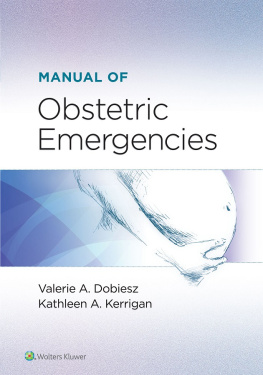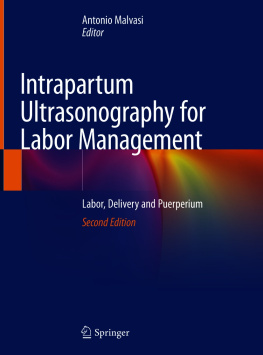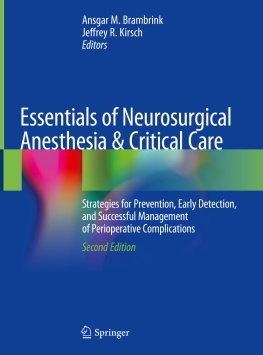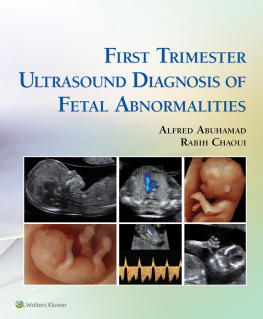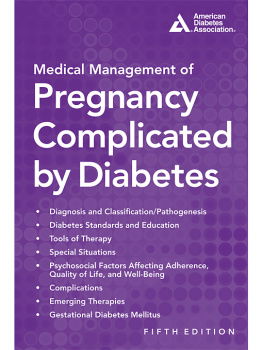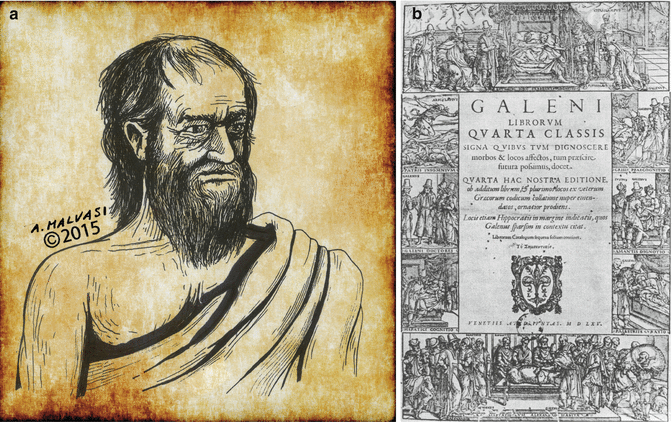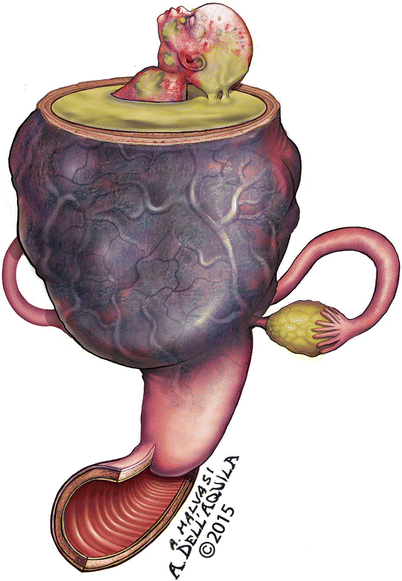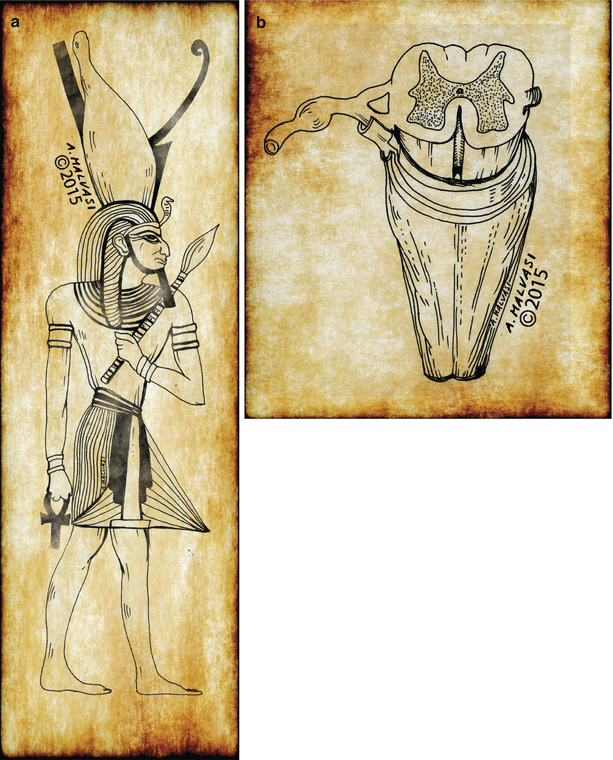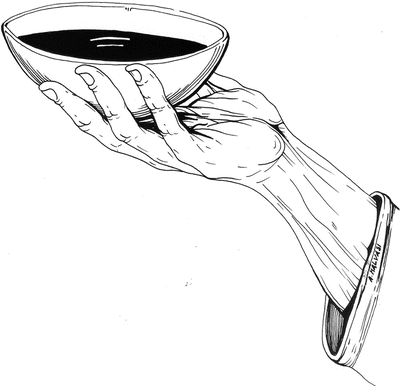1. A Brief History of Obstetric Complications
People have been writing about the diseases of women for as long as there has been medical writing. Nearly a fifth of the oldest collections of western medical texts since that attributed to Hippocrates are dedicated to the female body [].
Fig. 1.1
Galen ( a ) and his book ( b ): Galeni.omnia quae exant opera in Latinum sermonem conversa. Juntarum quarta editionem. Venetiis 1565. Folio 360 240, front. Inc.Voll. 11
There exists a significant body of specialized gynecological texts, with more than a hundred chapters produced between the fourth and fifteenth centuries [], the empress unborn child died, and a severe infectious process compromised the patient. Blood mixed with worms poured out from her genitals. So great was the malodour of the environment that all the herbs of India and the known perfumes could achieve nothing; her body smelled as if she had died many days previously. At the same time a high fever gripped her whole body, making it a real pyre. Her condition worsened and her entourage summoned Abbot Arsakiosto give her the Holy Communion. After that, the child was aborted, dead. Her entourage, satisfied, ordered a litany; unfortunately, during the ritual, the empress vomited out her soul. This, of course, had an important impact on the succession line to the throne and, therefore, in history.
Another matter of truly particular interest to the ancient people was whether or not a woman was capable of becoming or was, indeed, pregnant. In the ancient Egypt [). This misconception was set forward by Egyptian priests who were engaged with sacrifices of bulls to the gods. (They perceived the phallus of the bull as an extension of the spine, since bovine retractor penis muscles are attached to the sacral vertebrae.) Therefore, infertility was more a male nervous condition rather than a female tare. The maternal part in reproduction was unclear since they did not realize that sperm traveled to the uterus and to the tubes, nor did they recognize the ovaries. The female body served as an incubator for the fetus; the uterus was a vessel, but curiously the vital role of the placenta in fetal nourishment was already appreciated.
Fig. 1.3
Ancient Egyptian ( a ) and their concept of male fertility: the semen was believed to originate in the spinal cord ( b )
Just a few from the known methods for pregnancy diagnosis in ancient Egypt have survived to our days a thorough account of the number of matinal vomits and the onion test which consisted in putting an onion deeply into the vagina and checking the womans breath the morning after, thus considering an onion smell as a positive result (Fig. ). No relationship between lack of menses and gestation is described in ancient texts. Consequently, early miscarriage was not taken into account, and pathologies as extrauterine pregnancy were not even considered possible.
Fig. 1.4
Onion test on dilute vaginal discharge morning after, thus considering an onion smell as a positive result
The first description of pregnancy tests comes from the Berlin Papyrus, which also gives instructions for predicting the sex of the fetus: urine from a pregnant woman was poured on grains of barley and emmer wheat. If they sprouted, a pregnancy was confirmed. If barley sprouted first, the fetus was a male. If the emmer wheat sprouted first, it meant a female, and if none grew the pregnancy would fail [].
The correct diagnosis of the early pregnancy complications and their management are fairly recent, bound to the development of modern imaging techniques. We think it would be of readers interest to have a historic perspective of the perceptions and the understanding of ancient physicians about spontaneous abortion, recurrent pregnancy loss (miscarriage), and later ectopic pregnancy and gestational trophoblastic disease.
1.1 Miscarriage
Ancient cultures have applied a variety of fascinating therapies to prevent the occurrence and reoccurrence of miscarriage. Ceremonies of ritual purification, special prayers, and a variety of medicinal therapies were employed throughout the ages to prevent this feared event. Rituals to memorialize and help mourn the lost pregnancy were developed in many cultures [].
The middle ages saw a big change to the attitude regarding early pregnancy loss, mainly because the interest of physicians, priests, and lawmen throughout was to determine whether there were criminal intentions or not behind the miscarriage. The actual causes of even recurrent miscarriages and the way to prevent or treat them remained largely neglected.
The figure of miscarriage was suspiciously scarcely considered in the nineteenth century. Jackson [].
Fig. 1.5
Detail of Lewis and Clark at Three Forks by Edgar Samuel Paxson, mural in lobby of Montana House of Representatives
Over the past five decades, scholars have begun to document the changing representations and experiences of miscarriage. Sources are thin for womens experiences before the 1960s, so historical conclusions are, by all means, fairly speculative, though well argued [] mentioned Neglecting a threatened abortion is to increase the danger of the ovum being expelled from the uterus and in the case of actual abortions, there is the considerable risk of infection if no care is taken. It was, probably, the first mention of miscarriage as a pathological condition with its inherent risks.
As mentioned above, it was not until the first half of twentieth century when recurrent miscarriage and threatened abortion became medical subjects. The advent of hormones and hormonal therapy for conditions such as diabetes [].
Throughout the last few decades, with the mass implementation of ultrasonography in the practice of gynecology, the diagnosis of nonviable pregnancy became straightforward, and the term missed abortion was added to the medical terminology [].


